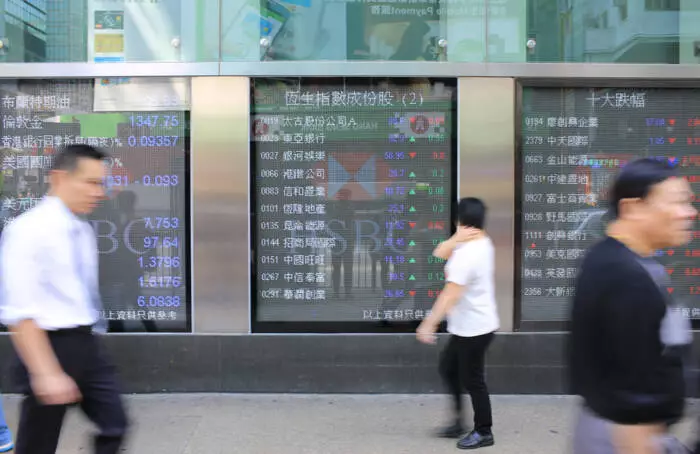The Hang Seng Index has recently exhibited a robust performance, reflecting a 3.79% increase that has extended its winning streak to six consecutive weeks, marking the longest such span since 2019. Investors appear to have effectively brushed aside concerns surrounding trade tensions, instead embracing the stimulus pledges emanating from Beijing, alongside favorable corporate earnings reports. This period of growth can be interpreted as a sign of shifting investor sentiment, where optimism surrounding government intervention and economic support has taken precedence over geopolitical uncertainties.
The Hang Seng Tech Index, an indicator of the technology sector’s health, has seen an impressive surge of 6.03% in the same timeframe, also boasting a six-week winning streak. Notably, major tech players like Alibaba and Tencent reported significant gains, with Alibaba seeing an 11.60% increase following its better-than-expected revenue forecasts. Moreover, Tencent enjoyed a 9.12% rise, underscoring the strength of tech stocks amid a backdrop of broader market gains.
However, it is essential to highlight the contrasting performance of Baidu, which suffered a 7.30% decline. This drop raises questions about the long-term viability of certain tech stocks, particularly in light of Baidu’s absence from Beijing’s Symposium and a dip in its quarterly revenue. Such disparities within the technology sector reflect the nuanced nature of investor confidence, suggesting a need for caution despite overall market gains.
The performance of mainland China’s equity markets, represented by indices such as the CSI 300 and the Shanghai Composite Index, saw increases of 1% and 0.97% respectively for the week ending February 21. The resilience of these markets amidst ongoing threats of U.S. tariffs points to a growing optimism fueled by potential domestic stimulus measures aimed at boosting consumption. This optimism stands in stark contrast to the skepticism that might be expected in the face of international trade tensions.
Furthermore, developments in commodities markets during the same period highlight a mixed bag of results. Gold, a traditional safe-haven asset, continued its upward trajectory, extending its winning streak to eight weeks, culminating at a closing price of $2,936 after reaching an all-time high of $2,955. In contrast, crude oil prices faced downward pressure, closing at $70.557 after a notable slide. Such fluctuations in commodity prices can significantly influence macroeconomic conditions and investor sentiment across various sectors.
The Australian Securities Exchange, represented by the ASX 200, observed a detrimental 3.03% drop during the week, attributed largely to the Reserve Bank of Australia’s less dovish-than-anticipated outlook. This announcement adversely impacted banking stocks, which reported disappointing earnings. Noteworthy declines were seen in major banks such as Commonwealth Bank of Australia, National Australia Bank, and Westpac Banking Corp, all of which experienced significant downtrends ranging from 8.29% to 14.42%.
Amidst these losses, there was a glimmer of hope for the mining sector, buoyed by rising iron ore prices. Companies like BHP Group Ltd. and Rio Tinto Ltd. managed to post gains, demonstrating the sector’s resilience even as broader market pressures weighed down other industries.
The Nikkei Index also faced challenges, closing down 0.81% as the USD/JPY exchange rate fell by 2.01%. The appreciation of the Japanese Yen carries implications for exporters, potentially constraining overseas earnings and corporate valuations. The Yen’s strength is closely linked to expectations surrounding future monetary policy moves from the Bank of Japan, particularly given recent positive indicators in GDP growth, inflation, and services sector activity.
This week is poised to be crucial for Asian markets as investors closely monitor economic data releases and geopolitical developments, especially concerning trade relations and central bank forward guidance. A lack of effective stimulus could test the resolve of buyers in the face of potential market consolidations. Consequently, market players may need to recalibrate their strategies, remaining alert to evolving macroeconomic dynamics that shape the investment landscape.
While the recent performance of the Hang Seng Index and related markets signals a phase of optimism, underlying challenges persist. The disparities within sectors, regional economic pressures, and global trade intricacies all highlight the complexity of navigating these turbulent waters. Investors must remain vigilant, prepared to adapt as market conditions evolve.

